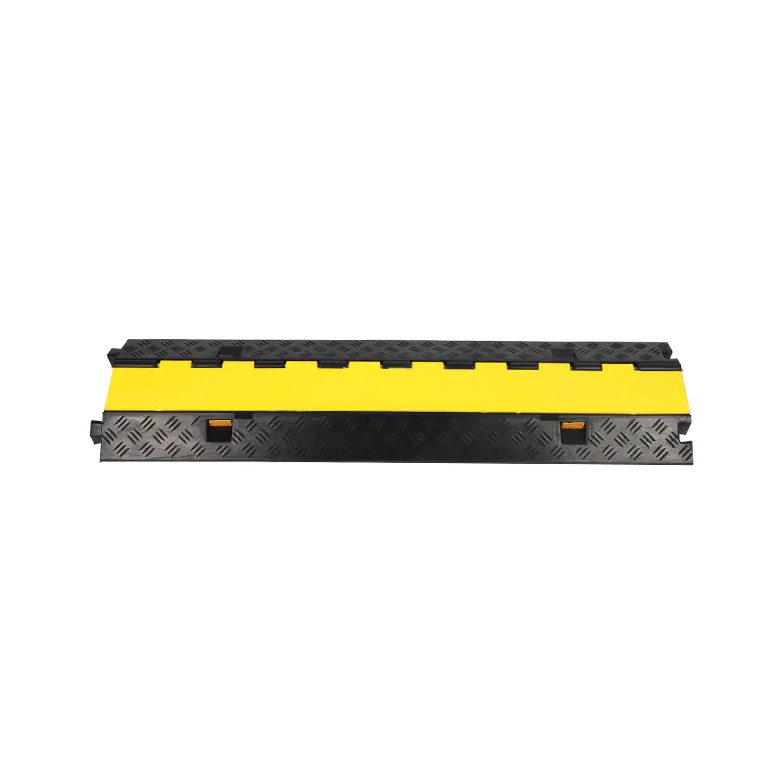The question of whether a Cable Protector Ramp has an anti-slip design is critical to its role in providing safe passage for pedestrians and vehicles over cable-covered areas. In most industrial and commercial applications, Cable Protector Ramps are not only used to shield electrical wires and hoses from impact and compression but also to ensure that people and equipment can move over them without risk of slipping or falling. This is particularly important in environments where foot traffic is heavy, such as warehouses, event venues, construction sites, or public walkways. As such, the majority of modern Cable Protector Ramp models are purposefully engineered with anti-slip features as a standard part of their design.
Typically, the surface of a Cable Protector Ramp includes a textured or treaded pattern, which is molded directly into the top layer of the ramp. These patterns can vary in style—from crosshatch textures to diamond plate finishes—but the purpose is the same: to create enough friction between the ramp surface and the foot or wheel that passes over it. This textured design significantly reduces the chances of slipping, even when the ramp is wet or exposed to oil, dust, or other contaminants common in industrial settings. Additionally, many ramps use high-traction materials such as thermoplastic rubber or polyurethane, which naturally provide better grip than smoother plastics or metals.
In outdoor applications, where weather is a constant variable, the anti-slip capability of a Cable Protector Ramp becomes even more important. Rain, snow, and humidity can create dangerously slick surfaces, especially on equipment placed on inclined or uneven terrain. A well-designed Cable Protector Ramp counteracts this risk by combining its tread pattern with a slightly raised profile that channels water away and provides additional contact points for shoes or tires. Some models are also tested under wet conditions to meet safety standards related to slip resistance, ensuring they perform reliably in real-world environments.
Beyond texture, the stability of the ramp itself also plays a role in reducing slippage. Many Cable Protector Ramp units are made with a wide, low-profile base and high-friction bottoms to prevent the entire ramp from shifting when walked or driven over. This means that even under the weight of heavy machinery or in high-traffic zones, the ramp remains in place, further supporting its safety claims. For added security, certain models may feature mounting holes or interlocking mechanisms that allow multiple units to be linked together or anchored to the ground. This not only creates a continuous protected pathway for cables but also ensures consistent traction throughout the ramp system.
In summary, most Cable Protector Ramp products on the market today do indeed feature anti-slip designs. These include textured surfaces, high-friction materials, and stable base structures that collectively minimize the risk of accidents caused by slipping. Whether used indoors or outdoors, under dry or wet conditions, the Cable Protector Ramp is built not just to protect the cables it covers, but also to safeguard the people and vehicles that cross it. With workplace safety regulations becoming increasingly stringent, the presence of non-slip features on Cable Protector Ramps is not only expected but essential for compliance and operational safety.
Place of Origin: Zhejiang, China
Brand Name: Yongsheng
Material: 100% recycled Rubber base & PVC yellow lid
Color: Black and Yellow
Weight: 6kg
Features: Anti-Pressure
Length: 1000mm
Packing: Woven Bag
Usage: Decelerate Speed
MOQ: 200 pcs
Size: 1000x250x50mm
Function: Cable Protection
